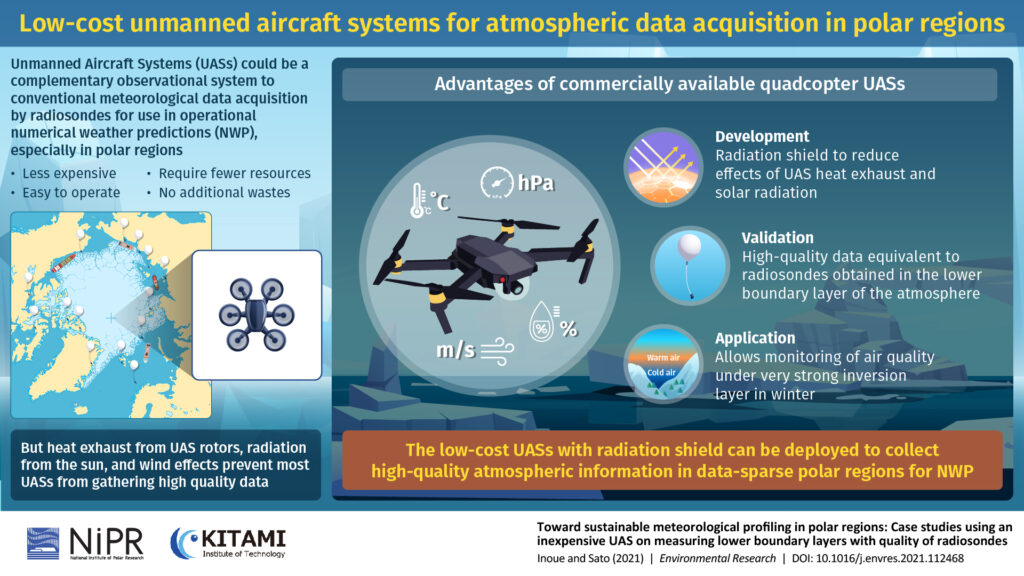Japanese researchers have conducted an experiment to demonstrate how a modified commercial drone could gather high-quality meteorological data comparable to multiple radiosonde observations from polar environments.
While the daily vertical state of the atmosphere is often collected using radiosondes, these networks are limited in polar regions due to the environmental conditions and high operating costs in terms of sensors, energy and human resources. Additionally, downed radiosondes can leave waste over the land and oceans. With this in mind, the research team looked to find a complementary way to strengthen the observing network with high-quality meteorological data for numerical weather prediction (NWPs) models.
While unmanned aircraft systems (UAS) or drones could potentially fit the bill, the quality of data collected by such systems can be impacted by radiation effects (from the sun and the drone body), the deposition of precipitation and cloud droplets, and the position of the sensors relative to wind direction.
Dr Jun Inoue from Japan’s National Institute of Polar Research (NIPR), and assistant professor Kazutoshi Sato from Kitami Institute of Technology (KIT), investigated the possibility of collecting high-quality atmospheric data using a conventional low-cost UAS equipped with a radiation shield.
Commenting on the experiment, Dr Inoue said, “Sustainable observing networks for NWPs are essential for preparing for weather disasters under the warming climate. Since the number of radiosonde observations have hardly increased in a long time because of the costs of resources, continuous observations with a UAS are a highly desirable alternative to achieve sustainable development as well as meet the needs of ordinary people with improved forecasts.”
In their study, the duo focused on a commercially available drone, the DJI Mavic 2 Enterprise Dual UAS (M2ED). They performed laboratory experiments to determine the horizontal distribution of wind and heat exhaust below the M2ED as a way to gauge the ideal location for the sensors. Then using 3D printing and a heat-reflecting coating, they developed a radiation shield for the sensors that maintained ventilation simultaneously. The shield additionally prevented the deposition of precipitation on the sensor.
Next, they performed field experiments on the M2ED drone and compared its performance with two other meteorologically customized UASs – the ACSL-PF2- R-SWM and Meteodrone MM-670. This was followed by field tests on the three UASs launched concurrently with radiosondes and a comparison of their performances. The results showed that not only did the M2ED provide high-quality data equivalent to that of the two other drones, its accuracy was comparable to radiosondes.
“Our findings demonstrate that it is possible to make the existing polar observational networks sustainable with UASs. This could significantly boost their observation frequencies and spatial coverage through citizen science programs,” said Dr Inoue.
The study is set to be published in the April 2022 edition of the journal Environmental Research.



